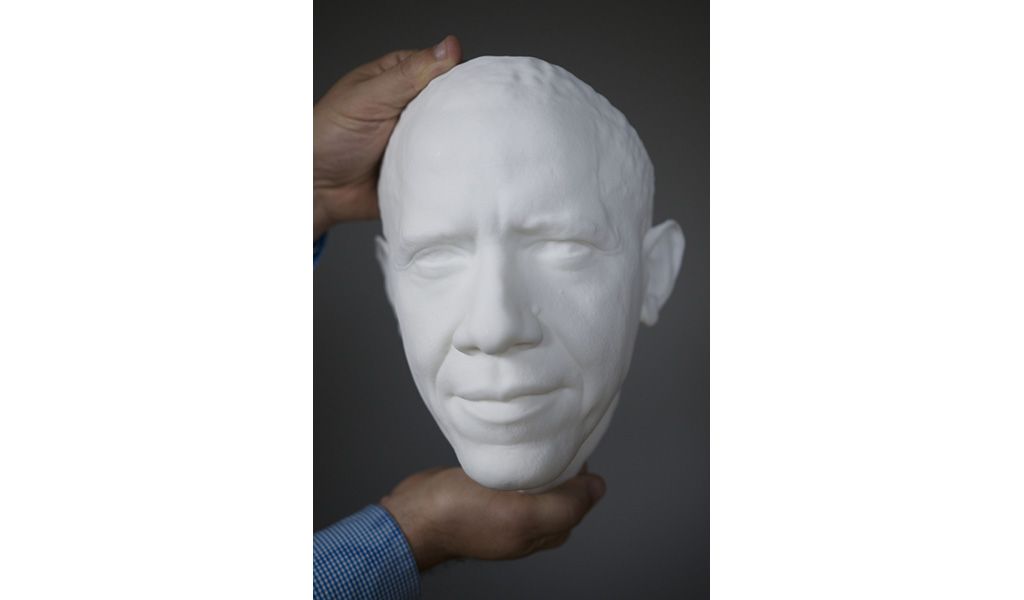President Obama is Now the First President to be 3D Scanned and Printed
A Smithsonian-led team earlier this year scanned the president, creating a bust and life mask for the National Portrait Gallery
UPDATE 12/2/2014: The first presidential portraits ever to be created from a 3D scan went on display today in the Smithsonian Castle building in Washington, D.C. And a new video depicts President Barack Obama undergoing a digital scan process when a Smithsonian-led team visited the White House in June.
We've heard of 3D printers potentially creating everything from pizzas to a pancreas. But the newest development in the burgeoning technology is a president—well, his face and shoulders, anyway.
The first presidential portraits created from 3D scan data were displayed today at the White House Maker Faire, featuring Barack Obama's facial data collected by a Smithsonian-led team of 3D digital imaging specialists. Both a bust and life mask of the nation's 44th president were shown at the inaugural Makers Faire, an event that celebrates Americans who employ technology to foster innovation and create new business. The replicas will eventually join the collections at the National Portrait Gallery, which owns multiple images of each president, including the famed plaster life masks of Abraham Lincoln and George Washington.

Two different capture methods were used, says Vincent Rossi, a Smithsonian 3D program officer who worked with the team along with colleague Adam Metallo and Günter Waibel, director of the Digitization Program Office. "[First], we 3D-scanned the face, ear to ear, at extremely high resolution, capturing details down to the pore level of the skin. We worked with a team from the University of Southern California, who use this technology to 3D-scan Hollywood actors. And then the Smithsonian 3D team used hand-held structured light scanners to scan the rest of the bust—the sides of the face, under the chin, the back of the head. We put these two data sets together in order to create the model we used for the 3D print."
The President was curious about the procedure, says Rossi, and asked questions during the scanning—a session that took only minutes. "He seemed to enjoy the process," he says. "He was interested in the technology."
While there are already paintings and photographs of President Barack Obama in the Smithsonian’s collections, Waibel says that the 3D scanning will change the way future generations look back at past leaders. It "really has the potential to connect people to his life and times and legacy with an immediacy that a simple photograph or a painting simply cannot convey,” he says.
Today, Faire visitors were already connecting with the technology via another modern medium—the smartphone.
"There's a lot of people taking selfies with the 3D print of the president," says Rossi.
But the question remains—was Obama (who did pose for a few traditional snapshots alongside his likeness) one of them?
"Unfortunately, no."
/https://tf-cmsv2-smithsonianmag-media.s3.amazonaws.com/accounts/headshot/Fawcett-Bio.jpg)


/https://tf-cmsv2-smithsonianmag-media.s3.amazonaws.com/accounts/headshot/Fawcett-Bio.jpg)